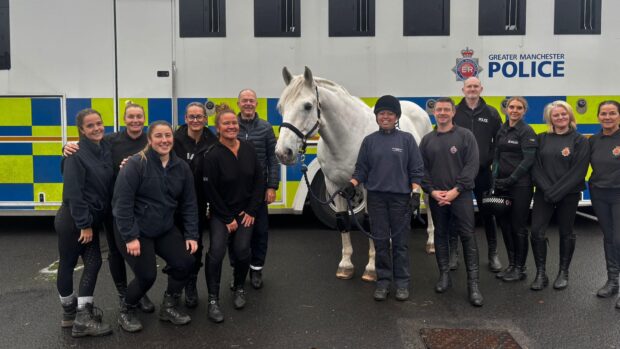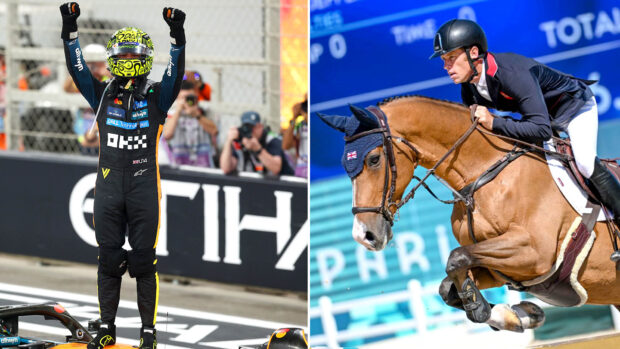Grooms have come back under the spotlight as it is discussed whether recent campaigns are having an impact on the challenges in the industry.
Researchers from the Van Hall Larenstein University of Applied Sciences in the Netherlands aimed to determine whether four initiatives, the formation of the International Grooms Association (IGA), recognition at the 2022 World Championships, the #ChampionsAsOne campaign and the FEI best groom award, were “perceived by grooms as addressing prevalent barriers that currently prevent them staying in the industry”.
More than 1,300 grooms took part in a survey, 54% of which had left the industry. Among the findings, 52.3% of participants had heard of some of the initiatives but not all, formation of the IGA was the “most impactful” initiative, but when asked about the personal impact of the initiatives 58.5% chose “none”.
Co-author Susanna Ole told H&H the paper investigated what the industry’s “real issues” are, and whether the initiatives “actually tackled those”. She added that in the survey grooms highlighted the need for better remuneration, reasonable workload and improved work-life balance, and that future interventions need to tackle these areas.
“The World Championships in Herning and #ChampionsAsOne were one-time marketing campaigns,” she said. “While they may have improved the visibility of the grooms to the public, they did very little to address the fundamental issues in the industry. The same goes for the FEI award, which has been around for many years now, yet hasn’t affected any real change.”
But Ms Ole said the IGA can be considered “the only one with the potential to make a difference” by being in a position to lobby on “important topics” such as pay and working conditions.
IGA founder Lucy Katan told H&H any research is “always interesting”, but highlighted that as 54% of participants are former grooms they may not have experienced the initiatives that have taken place in the last two years.
Ms Ole agreed that assuming that many of the former groom participants left the industry before 2022 it would be “more difficult for them to feel the impact of the initiatives on a personal level” – but that the work results in “interesting data”, which will be used in future research.
Ms Katan believes there have been some “really significant improvements in the industry, certainly at shows with greater budgets”.
“The IGA is working on rule changes with the FEI grooms’ consultative group that might affect grooms, representing their voice,” she said, adding that a key factor in changing the industry is focusing on “good employment”.
“Change takes time. We must reward and recognise grooms in the public domain, hence the FEI grooms’ award and show graphics at the 2022 World Championships, but grooms themselves must engage in the process. They have a professional association in the IGA, and they should belong and use their voice to make change happen.”
An FEI spokesman told H&H that “influencing the working conditions of individual grooms globally presents a significant challenge” and the FEI has “approached this with a sense of realism”.
“We understand the limitations of our scope and through the establishment of the IGA, we have focused our efforts on areas where we can exert influence and affect meaningful change. While we are aware that more can be done, the FEI and the IGA cannot single-handedly resolve all the challenges faced by grooms,” he said.
“The current staffing crisis and finding solutions to the underlying issues that prevent grooms from staying in the industry necessitate a collaborative effort from all stakeholders, and depends on the full commitment and cooperation of national federations and authorities, as well as the athletes who employ these grooms.”
The spokesman added that through existing initiatives the FEI is “confident that these efforts will serve as powerful incentives for driving the change at national level”.
“While there is a collective responsibility to strive for improvements, it is imperative that grooms also actively engage in existing processes and use the tools available to them to advocate for change within their profession,” he said.
Sean Vard, long-term groom to Swiss showjumper Martin Fuchs and IGA representative, told H&H he has seen positive changes in the industry, but described it as a long process that needs to “start at the bottom”.
He added that some shows with big budgets, such as those at the World Equestrian Center in Florida or Rolex events “really set a standard” and grooms are “spoiled with the facilities” – but that generally speaking at some lower-level and lower-budget shows, organisers “do what is requested by the FEI and that’s provide the basic care, which often enough is not acceptable”.
Mr Vard said the initiatives, such as grooms’ names being displayed on television at the 2022 World Championships, are “a nice honour” and “really appreciated”, but that “realistically, we want better conditions at the shows”.
“It is happening, but it’s a very slow process – with the exception of the shows that go above and beyond,” he said. “We need also to look down the line at conditions like payment, contracts, and standards – and this is what the IGA is pushing for. It takes time but I’m hoping it is going in the right direction.”
You might also be interested in:

Equestrian businesses among those investigated for underpaying staff

Carl Hester: ‘It’s time our industry stepped up to offer tangible rewards for grooms’

Agreement means grooms’ voices will be heard at the top of the sport

Organisers praised as grooms put to the forefront at World Championships

Subscribe to Horse & Hound magazine today – and enjoy unlimited website access all year round
Horse & Hound magazine, out every Thursday, is packed with all the latest news and reports, as well as interviews, specials, nostalgia, vet and training advice. Find how you can enjoy the magazine delivered to your door every week, plus options to upgrade your subscription to access our online service that brings you breaking news and reports as well as other benefits.




